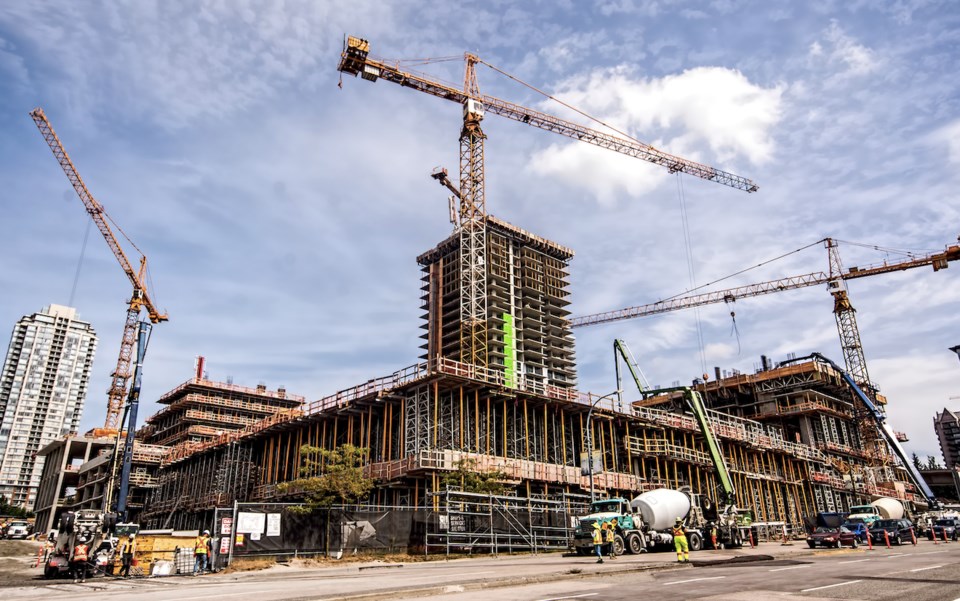A surge in private development and ongoing mega-projects in the resource arena will rank British Columbia as a leader in construction spending growth into 2021, according to a national study by BTY Group.
The international consulting firm predicts B.C. will post at least a 5 per cent increase in construction expenditures next year, matching Ontario and Quebec and leading all Western provinces.
While much of B.C.’s growth will come from giant resource projects, new infrastructure spending and mixed-use development projects will also add to the construction acceleration into 2021 and beyond, the consultancy says.
The study notes that non-residential activity in B.C. increased 6.9 per cent in 2020 as work on the $11 billion liquefied natural gas (LNG) terminal at Kitimat continued.
Other major projects, such as the Trans Mountain oil pipeline, the CoastLink gas pipeline, BC Hydro’s Site C power project, the upcoming Patullo Bridge replacement across the Fraser River and the $2.8 billion SkyTrain extension along Broadway in Vancouver “will keep activity levels high and labour availability tight over the next few years”, the study says.
“New highway and multiple hospital construction projects will add a further push to bump up [infrastructure] construction levels by 15.4 per cent in 2021 and sustain growth at high levels over the next few years,” the report states.
Residential construction, much of it in mixed-use projects, will add to B.C.’s building pace.
This was underlined in November, when the value of B.C. residential building permits soared 28 per cent from a month earlier, the largest gain in the country. At $6.4 billion, the November tally was the highest monthly level for residential permits in B.C. history, according to Statistics Canada.
BTY Group predicts that B.C. housing starts will increase from 35,300 in 2020 to 36,300 in 2021, which is higher than the combined projected starts in all other western provinces next year.
Major B.C. projects that include multi-unit housing either underway or starting in 2021 include the City of Lougheed development on the Burnaby-Coquitlam border and the redevelopment of the Oakridge shopping centre in Vancouver, plus large mixed-use projects in Victoria and Kelowna.
The BTY outlook for the Prairies is less bullish, noting that most increases are tied to government stimulus spending.
Alberta: The second sharpest economic contraction among provinces will prolong the return of construction to pre-2020 levels. The bright spot is rapidly growing private-sector investment in renewables, the report says, and an 8 per cent increase in government stimulus spending. This includes $10 billion for healthcare, pipelines, schools, with $6.9 billion already earmarked. Residential construction is expected to remain flat into 2021, however.
Saskatchewan: Continuing weakness in the energy and mineral mining sectors are slowing recovery, but booming agri-food production and exports will help the province weather the storm until recovery takes hold, according to BTY Group. A $7.5 billion capital plan for boosting the provincial economy will go toward schools, hospitals, highways and utilities. Some $377 million is allocated for transportation infrastructure, primarily highway expansion and improvement.
Manitoba: Manitoba – expected to experience the least economic impact from COVID-19 – will still see construction declines across the board despite new government infrastructure spending, according to the BTY forecast. Manitoba is ramping up spending through its $500 million Manitoba Restart Program, which will build on already-planned infrastructure investments of $3 billion over the next two years. Another $150 million has been added for highway improvement projects under the Restart Program, with more funding anticipated.



